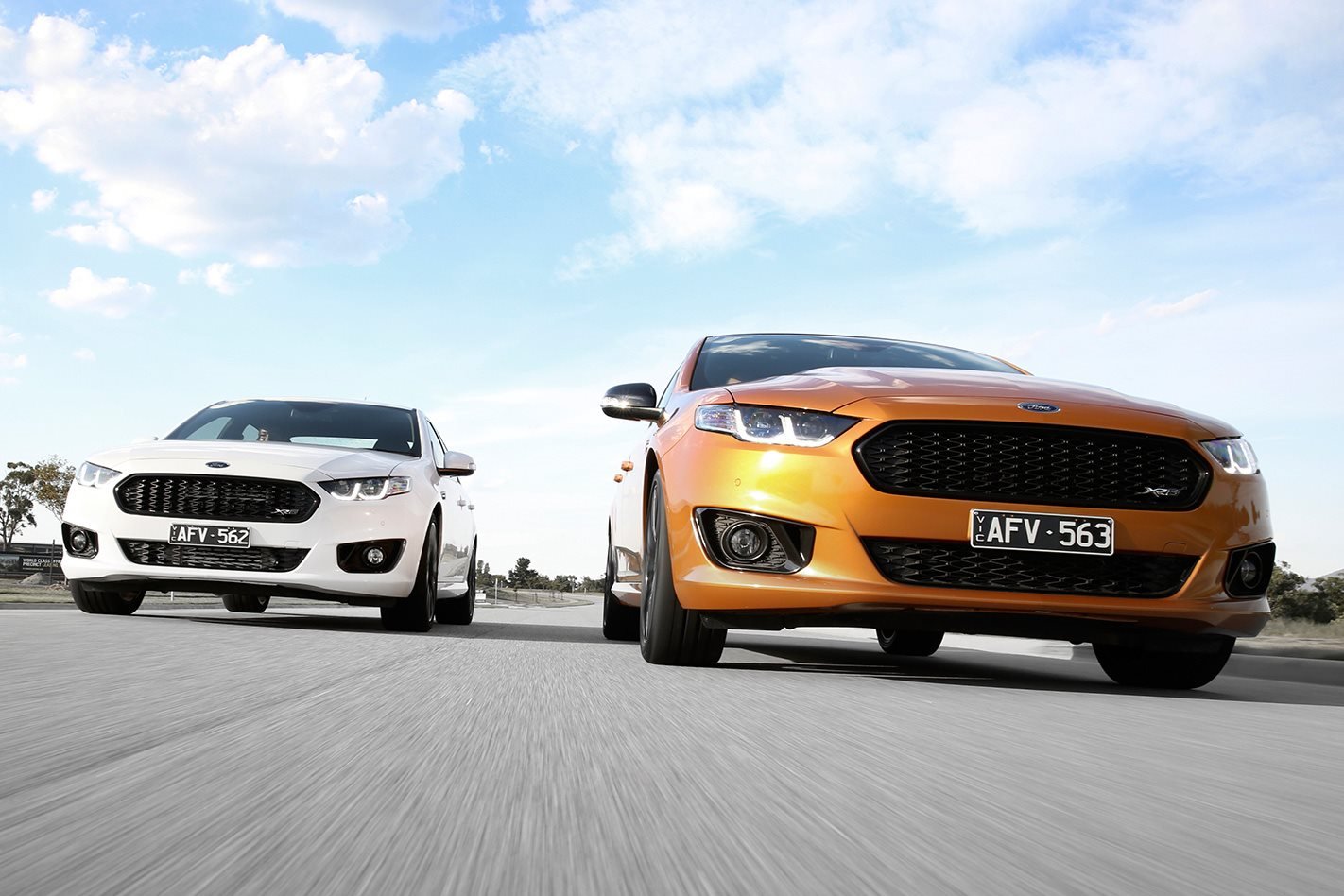One newton metre – piffling, but enough for the new Falcon XR6 Sprint to pip its XR8 sibling for the title of Australia’s torquiest engine ever, 576 v 575Nm.
It’s fun to imagine this was deliberate. Ever since the XR6 Turbo arrived with the BA in 2002, Blue Oval powerbrokers have kept the V8 Falcons on their pedestal, protected from any threat externally – and internally. The 4.0-litre, much-loved, venerable ‘Barra’ inline-six has always played second fiddle to the V8s by power, performance and price.
But with the Sprint program, Ford engineers were freed from any previous pecking order policies and allowed, within the constraints of what the driveline could handle, to unleash the Barra’s full potential. And in doing so they might’ve chanced upon an awkward truth, that if you’re going to make the best performance Falcon ever, the turbocharged six-pot might be the better donk for the job.
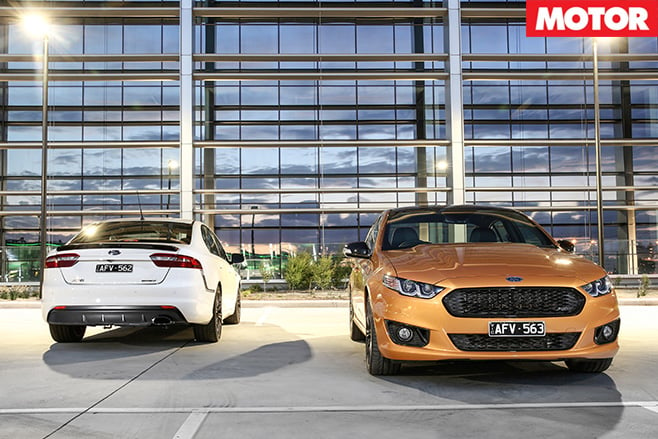
The XR8 Sprint is plainly the best, most-polished V8 performance Falcon ever.
Unfortunately it’s the same old story as you get in the car, your first instinct being, oh, the seat is really adjusted quite high, and the steering wheel quite low. No problem, I’ll just adjust one down and one up. Oh.
Ford’s SYNC software in the centre stack screen is the only thing reminding you, too, that you’re in 2016. Everything else feels straight from 2008 because, literally, it is. And the cruise control buttons, wiper and indicator stalks look terrifyingly similar to those in the BA Falcon launched in 2002. When it comes to interiors the Falcon’s been left behind.
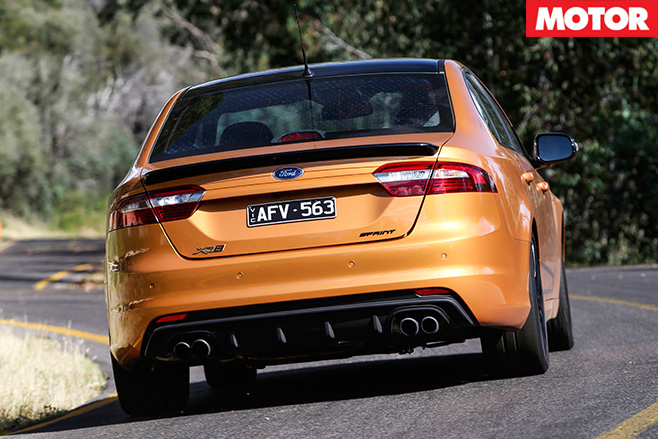
Ford’s engineers did the best job they could with the resources they had, and that meant powering up both cars, fitting new rubber and completely overhauling the existing suspension, as you’ve already read.
In the XR8 in particular, the ride has been significantly improved. The base FG X XR8 jiggles over small bumps and thuds over bigger ones, making for quite the firm and busy ride, but the Sprint is far more calm and comfortable without giving up crucial body control. Finally, the XR8 has the suspension to keep up with its engine, stable and cool in the high speed stuff and in bumpy corners, expertly working undulations letting you get on with the business of attacking.
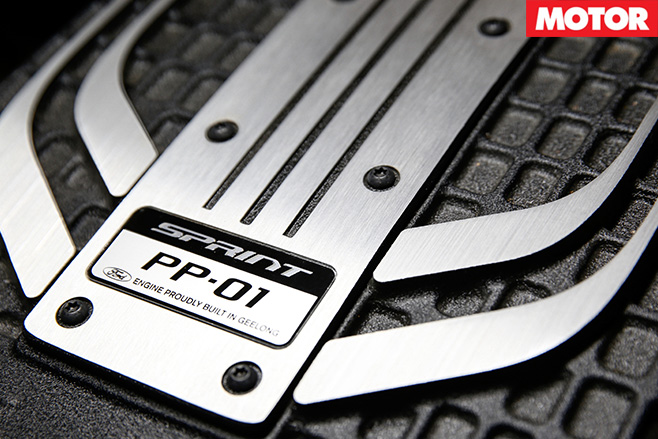
And it can put its power down with a cleanliness and effectiveness unmatched by V8 Falcons past. Even with ESP off, stall the auto XR8 Sprint up to about 2000rpm on its brake, let off and the rear 265/35s will hardly wheelspin as the power is put to the ground, even at full throttle.
Ford’s not claiming 0-100km/h times as per company policy but it reckons while more difficult to launch, the manual will be faster. We’ve been told already if we get a 4.6 from the manual and a 4.7 from the automatic we should keep trying. To the tune of about another tenth. And six or eight, to the tonne they’re as fast as each other.

With a clunky change and heavy-ish clutch, the XR8 Sprint is not the greatest manual in the world and the auto seems to suit its personality better. Gearchanges in the automatic’s manual mode are hardly twin-clutch quick and the down-changes are pretty average with some mean lurching and no rev-matching, but, as is the also the case in the XR6, up-changes are quicker than ever and accompanied by a cool spark-cut brap.
Grabbing a new gear just before redline, the acceleration uninterrupted, is terrific fun. Numbers? We will absolutely run them for an upcoming issue. And we’ll use the time to make a proper call on just how positive an effect those Pirelli P-Zero tyres have had.
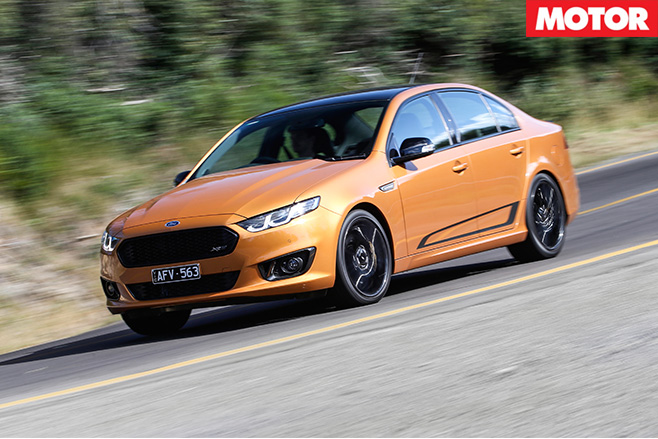
Ford showed us some impressive graphs that suggested the XR8 Sprint’s pivot point has been moved much further back in the car, hopefully helping to get rid of some of that unwelcome front-end vagueness. Initial impressions seem to be they’ve had success, although how much we can’t be completely sure.
But we wouldn’t need more time in the car to declare it the best V8 performance Falcon ever. It’s certainly the most polished V8 performance Falcon we’ve driven, with grown-up ride, serious grunt and more fun than ever, too.
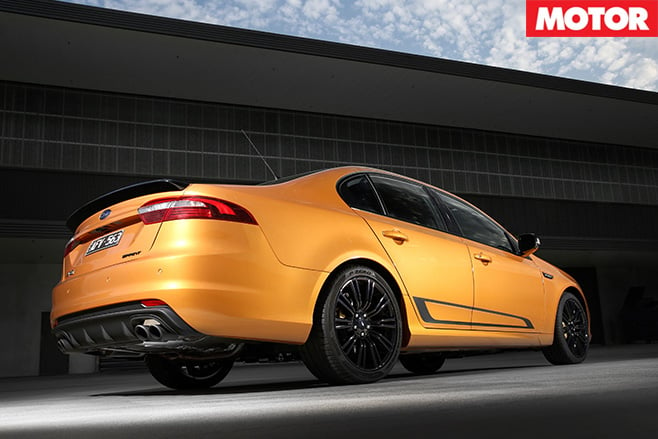
Yeah, the XR8 Sprint is still no BMW M5-eater, it will get utterly smoked by a new C63 and the HSV GTS is probably still more polished in corners (owing much to a more modern steering system), but the XR8 costs significantly less than all of them and even if it was $100K we’d still love it. Far from perfect, it has an enormous personality and that most difficult of traits to engineer – it’s loveable. Truly, few new performance cars are loveable these days, let alone likeable.
The XR8 Sprint will go down as one of the greatest fast Falcons ever. But the best? Well, there’s a problem.
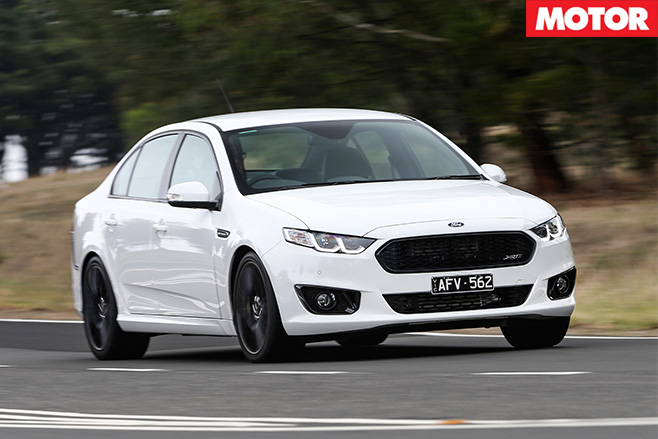
The effect is increasing urge as you go up the gears. From down in the revs the XR6 Sprint pulls with steam-train levels of torque, enthusiastic and strong all the way to redline where another gear can enter the breach uninterrupted. Where other cars will start to peter out, the XR6 Sprint just keeps charging. Its acceleration makes you want to keep your foot buried in it to see where it stops, but this is a game of chicken you will lose.
All the while the 370kW-on-overboost XR6 Sprint is emitting a satisfying straight-six growl, the turbo also hissing away under power. And shut the throttle under load and there’s even a hilarious blow-off valve flutter at just the right volume. This is by far the strongest Ford 4.0-litre inline-six we’ve driven, but also we’ve not known a Barra with a bigger personality.
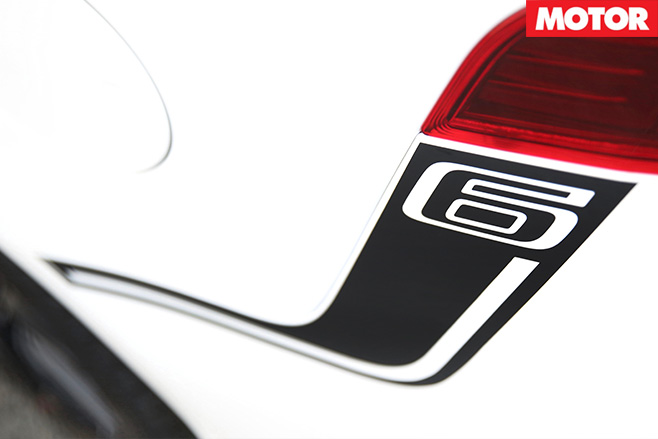
Though the Barra six is just 23kg lighter than the Miami eight (iron versus alloy block) those sticky Pirellis have 54kg less to deal with overall. In theory, this should make the XR6 Sprint the sharper cornering device. Despite not being able to attack a corner in anything less than third gear on the launch, our experience so far seems to back this up, but we will reserve judgement until we drive them on our terms.
Customers are hardly hanging around to find out which Sprint we think is best. Ford expects a near fifty-fifty split for manual and auto sales of the XR8, the former $59,990 and the auto $62,190. By the time you read this, production would have kicked off with cars on-sale May. Ford plans to build 1400 Sprints – 850 XR8s and 550 Turbos – but, err, if you’ve got this far and you’re mentally figured out you could afford one if you sold this or went without that, we’ve got some awkward news. The XR6 is sold out, so is the XR8 manual, and there were just a “handful” auto XR8s available as MOTOR went to press this March.

It’s an awkward truth we’ll look to confirm in a future issue before the Falcons are gone forever, but while both Sprints will go down as greats, the best performance Falcon ever could be a six. Maybe Ford knew it all along.
| u00a0 | FORD FALCON XR8 SPRINT | FORD FALCON XR6 SPRINT |
| Body | 5-door, 5-seat sedan | 5-door, 5-seat sedan |
| Drive | rear-wheel | rear-wheel |
| Engine | 4951cc V8, DOHC, 32v, supercharger | 3983cc inline-6, DOHC, 24v, turbocharger |
| Bore/stroke | 92.2 x 92.7mm | 92.3 x 99.3mm |
| Compression | 9.3:1 | 8.76:1 |
| Power | 345kW @ 5750rpm (400kW on overboost) | 325kW @ 6000rpm (370kW on overboost) |
| Torque | 575Nm @ 2220-6250rpm (650Nm on overboost) | 576Nm @ 2750rpm (650Nm on overboost) |
| Power/weight | 185kW/tonne (manual); 184kW/tonne (auto) | 179kW/tonne |
| Transmission | 6-speed manual or automatic | 6-speed automatic |
| Weight | 1869kg (manual); 1872kg (auto) | 1818kg |
| Suspension(F) | A-arms, coil springs, anti-roll bar | A-arms, coil springs, anti-roll bar |
| Suspension(R) | multi-links, coil springs, anti-roll bar | multi-links, coil springs, anti-roll bar |
| L/W/H | 4950/1868/1493mm | 4950/1868/1493mm |
| Wheelbase | 2838mm | 2838mm |
| Tracks | 1583/1598mm (f/r) | 1583/1598mm (f/r) |
| Steering | hydraulically-assisted rack-and-pinion | hydraulically-assisted rack-and-pinion |
| Brakes(F) | 355mm ventilated/drilled discs, 6-piston calipers | 355mm ventilated/drilled discs, 6-piston calipers |
| Brakes(R) | 330mm ventilated/drilled discs, 4-piston calipers | 330mm ventilated/drilled discs, 4-piston calipers |
| Wheels | 19.0 x 8.0-inch (f); 19 x 9.0-inch (r) | 19.0 x 8.0-inch (f); 19 x 9.0-inch (r) |
| Tyre Sizes | 245/35 R19 (f); 265/35 R 19 (r)u00a0 | 234/35 R19 (f); 265/35 R19(r) |
| Tyre | Pirelli P-Zero | Pirelli P Zero |
| Price as tested | $59,990 (manual); $62,190 (auto) | $54,990 |
| Pros | Grunt; noise; value; personality u2013 best V8 Falcon ever | Near-supercar straight-line urge; high-speed stability |
| Cons | Ancient interior; lacking tech; handling question marks | Has fallen behind in interior and tech; steering |
| Star Rating | 3.5/5 | 4/5 |

